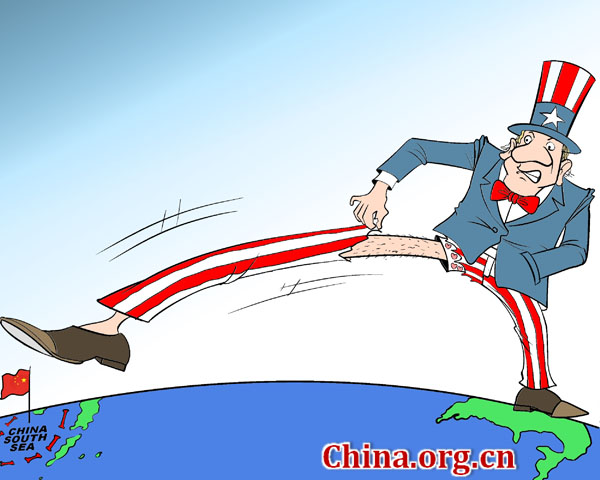Mapping out a model major country relationship
china.org.cn / chinagate.cn by Sajjad Malik, May 28, 2015 Adjust font size:
The tiffs between an emerging country and an established power are part of an old international discourse. Sometimes it is also called a Thucydides trap, based on the observations of the historian Thucydides regarding the causes of the Peloponnesian Wars. He said that the ancient conflict was propelled by the rise of Athenian power and the fear it inspired in Sparta.
|
[By Jiao Haiyang/China.org.cn] |
The theory is often quoted to highlight the possibility of collision between China and the United States, as the quick rise of the former as an economic power has disturbed the sole super power.
Their low-intensity rivalry has many colors. It is partly driven by strategic calculations and partly by economic competition. The two states are also vying for mastery over the Asia-Pacific region, which is pivotal to the United States' regional considerations. The U.S. often clashes with China's economic ambitions and security concerns.
Some of the U.S. worries regarding China are misplaced. Before posing any formidable challenge to its global hegemony, China needs to address multiple challenges. The immediate one is from its neighbors sharing the South China Sea periphery. China's policy of a stable and peaceful neighborhood is being threatened, as is evident in the tension in the recent past with Vietnam. The Philippines also shares part of the tension. The East China Sea is another issue with a different set of maritime neighbors.
The second challenge for China is regional competition with economic powers like Japan, South Koran, India and the ASEAN group. While China has been managing ties well with the ASEAN nations, its relationship with Japan and India is a challenge. South Korea and China are in competition but they also share common grievances against Japan, making the management of their ties relatively easier.
The third challenge for China is regional-cum-global. It starts from the Asia-Pacific and merges with the tangle of ties with the United States and its regional allies. It is a different policy game, demanding real acumen to steer through the relationship without falling into the Thucydides trap. It is here that the two countries need to agree on a policy framework for guiding their ties.
